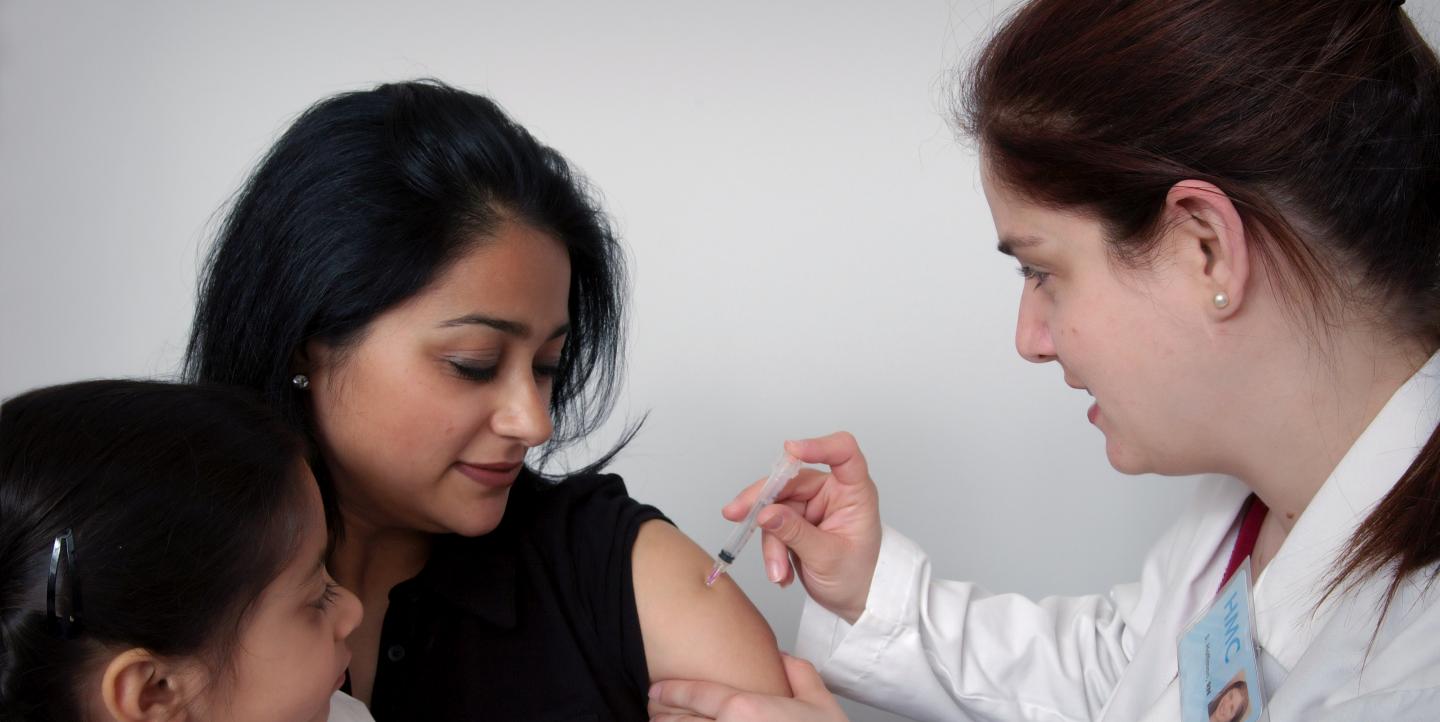As the pandemic continues, it’s vital that journalists help the public understand COVID-19 vaccines through reporting that is accurate, accessible, and values their emotions and concerns.
One aspect of this is providing reliable coverage of known side effects of the vaccines. This entails sifting through the unconfirmed rumors that have circulated about them, too, said Kerry Dooley Young, a freelance journalist and medical studies core topic leader on patient safety at the Association of Health Care Journalists, during a recent ICFJ Global Health Crisis Reporting Forum webinar.
Like any pharmaceutical product, vaccines can have side effects. The most common ones of the COVID-19 vaccines are minor. They include potential tiredness, headaches and muscle pain, among others, which may last up to a few days. More serious side effects like myocarditis and blood clots are exceedingly rare, said Young.
Still, there is a large amount of misinformation circulating around serious side effects to the vaccines. For instance, accounts of issues with fertility have spread, but they are unverified, and the CDC recommends that women who are trying to get pregnant receive the vaccine. Many more unconfirmed reports of vaccine side effects have circulated on the CDC’s VAERS database, which vaccine manufacturers regularly monitor.
“You’re better off getting the vaccine than risk getting COVID,” said Young, cautioning that the correlation made in individual, unverified reports about vaccine side effects does not imply causation.
[Read more: Tips for reporting on vaccines, hesitancy and misinformation]
Clear communication is key. Young highlighted one prominent distinction about coverage of COVID-19 health issues: the fast pace of information around the pandemic means that reporters must be careful not to promote unverified reporting. “If you have a trusted medical community making claims, it is legitimate,” she said. “It’s no longer polished health reporting [like it was pre-pandemic] — we are all learning about things at the same time.”
Journalists shouldn’t advocate blindly for vaccines, nor should their reporting create vaccine hesitancy. And as they carry out their reporting, journalists must pay attention to how people are reacting to the coverage.
Here are some key takeaways from the webinar.
Reporting numbers
-
It’s important that your reporting doesn’t create a “number soup.” Instead, provide proper context — still using data — to humanize your reporting. This can help better communicate actual findings, and in turn combat hesitancy.
-
Many vaccine-hesitant people say they are concerned about how quickly the vaccines were developed and how much data about their efficacy exists. For those with these concerns, it can be easy to make leaps about vaccine side effects, despite the fact they are unverified, explained Young. “This is something that is really difficult to address. Emotional reaction is so much more important than the data — you can’t just appeal to people with numbers. People who are already resistant won’t read that story,” she said. “Meet people where they are — it has to be a conversation.”
-
The fast pace of new and ongoing research around the pandemic means that conveying data accurately and effectively can be challenging. “If I give you numbers today, they may not be good for tomorrow,” said Young. Journalists need to be vigilant to make sure that the sources of the data and quotes they are using within their stories are reliable and up to date.
[Read more: Key quotes: Understanding how COVID-19 vaccines work]
Consulting credible sources
-
The proliferation of misinformation around COVID-19 has extended to unverified rumors about the vaccines. “If something happens to people after they get the vaccine, especially the COVID vaccine, they’ll make that connection,” said Young — even if it’s unrelated. “That’s what we’re seeing a lot with [unsubstantiated] concerns about miscarriage and fertility. It’s become very intense.”
-
It’s important to search for information from credible sources, including those relevant to your location. Some examples of helpful resources, available in multiple languages include:
- PubMed
- The Centers for Disease Control (CDC)
- The American Association of Obstetricians and Gynecologists, and related local associations abroad
- The American Society of Hematology
- The National Health Service
- Emergency medicine doctors and medical specialists, such as hematologists in local communities
-
Talking to medical professionals and researchers working in local communities can help bridge information gaps. It can be useful to understand how doctors navigate misinformation that has caught on in their communities, when communicating the verified facts about the vaccines to their patients, said Young.
-
While it is important to make your reporting accessible for readers, and “meet them where they are at,” do not leave out key terms completely. "Stick to a simpler description, but you do want to include jargon words because that is what people have read elsewhere. If they want to look for more information on their own, they will need these terms,” said Young. “I would introduce the concept and then I’d get into the jargon.”
Taking the time needed
-
Before a story is published, journalists need to advocate for their readers. Young suggested asking yourself: “Did I not just report numbers, but how people feel about these numbers? How are people going to react?”
-
Journalists need to highlight relevant reports that the medical community has published about vaccines, while mentioning caveats to new research. Credible sources and a checklist of quotes to support claims will help put things into context. “This is drug development,” said Young. We have to be humble about what we know [and what we don’t].”


